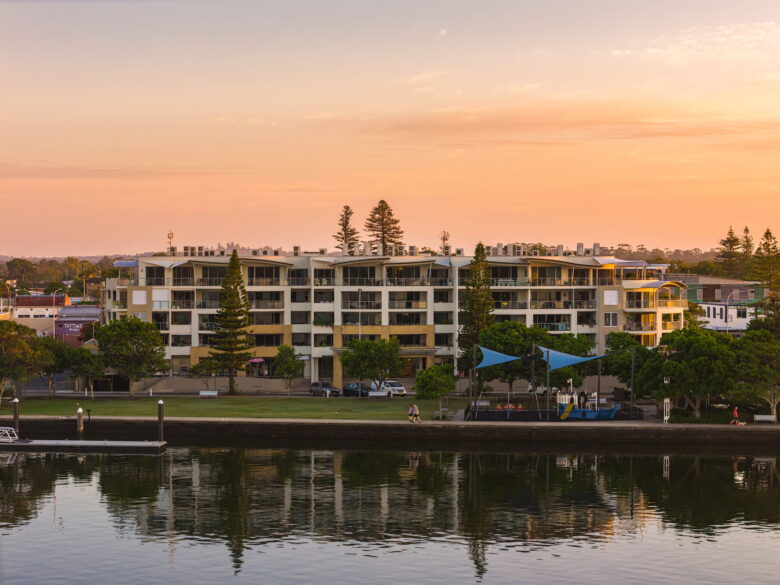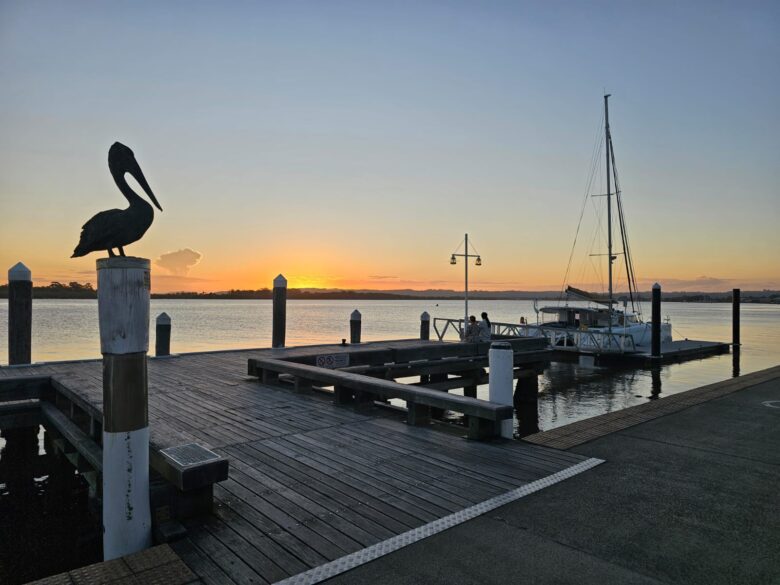Ballina, located on the beautiful northern coast of New South Wales, is a town that effortlessly blends history, heritage, and natural beauty. With its picturesque beaches, lush hinterland, and laid-back atmosphere, it’s easy to forget that this coastal paradise has a rich and fascinating past. From the indigenous history of the region to its colonial roots and modern-day development, Ballina’s story is one of resilience, growth, and community.
The Traditional Custodians
Before European settlers arrived, the Ballina region was home to the Bundjalung people, the traditional custodians of the land. The Bundjalung Nation stretches across the far north coast of New South Wales and the south-east of Queensland, with Ballina at the heart of their territory. For thousands of years, the Bundjalung people lived in harmony with the land, water, and wildlife, using the rivers, beaches, and forests for sustenance and shelter.
Their rich culture is reflected in the local landscape, with sacred sites, fishing areas, and dreaming stories passed down through generations. The Ballina area remains a place of spiritual significance for the Bundjalung people, and many visitors are encouraged to learn about and respect the indigenous culture that shaped this region.
Early European Settlement
In 1828, European exploration of the Ballina area began with the arrival of Major Thomas Mitchell, a surveyor and explorer who was sent by the government to map the region. While the area’s lush landscape and fertile soils made it an attractive prospect for farming and settlement, it wasn’t until the 1840s that European settlers began establishing permanent communities.
The town was initially known as “Bunyun” after the local Bundjalung word for the area, but as the European presence grew, it was renamed Ballina in 1844, after the town of Ballina in County Mayo, Ireland. The decision to establish a port at Ballina was a game-changer, and the town quickly became a bustling hub for the timber and sugar industries, with the Richmond River serving as a vital waterway for transporting goods.
The Rise of the Sugar Industry
In the late 19th century, Ballina’s economy saw significant growth with the establishment of the sugar cane industry. The fertile lands surrounding the Richmond River were ideal for sugar cultivation, and by the 1880s, Ballina was well on its way to becoming a sugar powerhouse. The introduction of sugar mills in the region not only boosted the local economy but also attracted a diverse workforce, with many people coming from different parts of Australia and the Pacific Islands.
The sugar industry shaped the development of Ballina, and its legacy can still be seen today in the architecture of the town and the surrounding areas. While the sugar mills have long since ceased operations, the town’s agricultural roots continue to play a role in the region’s identity.
A Hub for Maritime Heritage
Ballina’s relationship with the sea is a significant part of its history. The town’s location along the Richmond River made it a crucial maritime port for early settlers and a vital link for trade. During the 19th and early 20th centuries, Ballina was a key center for shipbuilding, with many local boats constructed for use in the river and beyond.
The Ballina Naval and Maritime Museum, located near the town centre, is a fantastic place to explore the town’s maritime history. The museum houses a collection of artifacts, photographs, and exhibits that highlight the importance of the river and the town’s role in the maritime industry. Visitors can learn about the famous Ballina boat builders, the significance of the Richmond River Lighthouse, and the ongoing connection between the community and the water.
Ballina’s Military Heritage: A Tribute to the Brave
Ballina’s military history is another vital part of the town’s rich heritage. The Ballina district has been home to many military personnel who served during both World Wars and beyond. The Ballina Military Museum is dedicated to preserving the stories of local soldiers and their contributions to Australia’s military efforts.
Located in the heart of Ballina, the museum displays an extensive collection of military memorabilia, including uniforms, medals, and photographs, as well as personal stories from those who served. The museum not only serves as a reminder of the bravery and sacrifice of the men and women from Ballina but also provides an educational experience for visitors, highlighting the impact of war on this small coastal town.
Modern-Day Ballina
Today, Ballina has grown into a vibrant coastal town, balancing its historical roots with modern-day development. The town’s colonial architecture, particularly in the heart of Ballina, serves as a reminder of its rich past. At the same time, the town has embraced growth, with new businesses, attractions, and a thriving tourism industry, which draw visitors from across Australia and around the world.
In recent years, the town has worked to preserve its heritage while fostering new cultural and community initiatives. Historic walking tours, heritage trails, and local events celebrate Ballina’s rich history and keep the spirit of the past alive for future generations. Whether you’re exploring the town’s historic sites, learning about its indigenous roots, or simply soaking in the coastal atmosphere, Ballina offers a fascinating journey through time.
Discovering Ballina’s Heritage
Ballina’s history and heritage are integral to its identity, from its indigenous roots to the impact of European settlement, the sugar industry, maritime connections, and military legacy. As you explore this beautiful region, you’re not only experiencing its natural beauty but also stepping into a rich and storied past that has shaped the town into what it is today. Ballina is a place where history comes alive, and its heritage is celebrated with pride.




